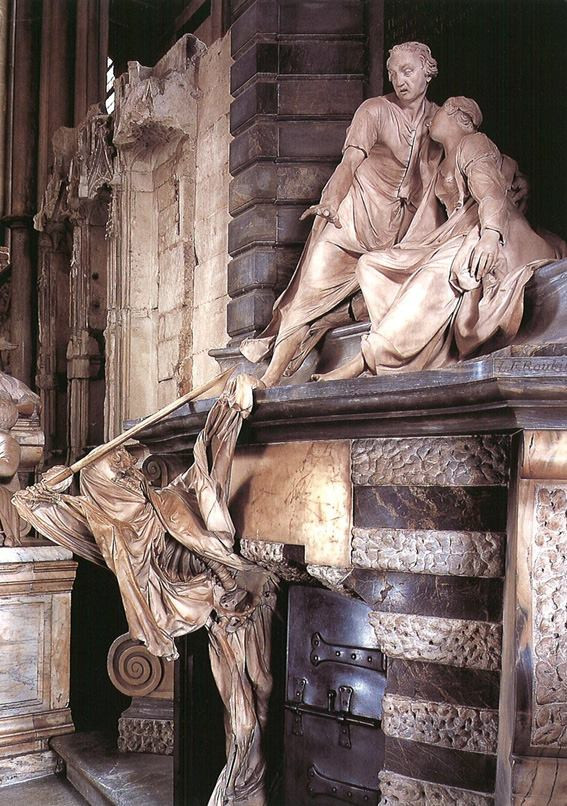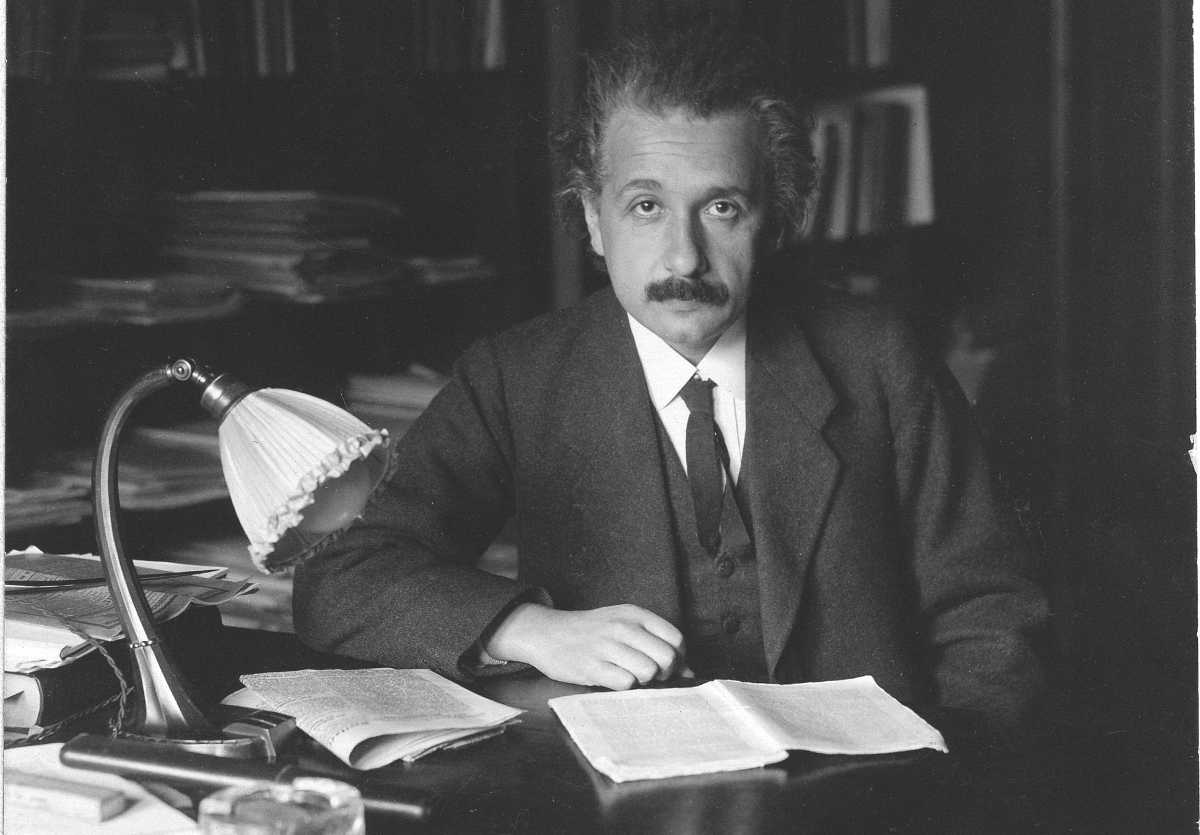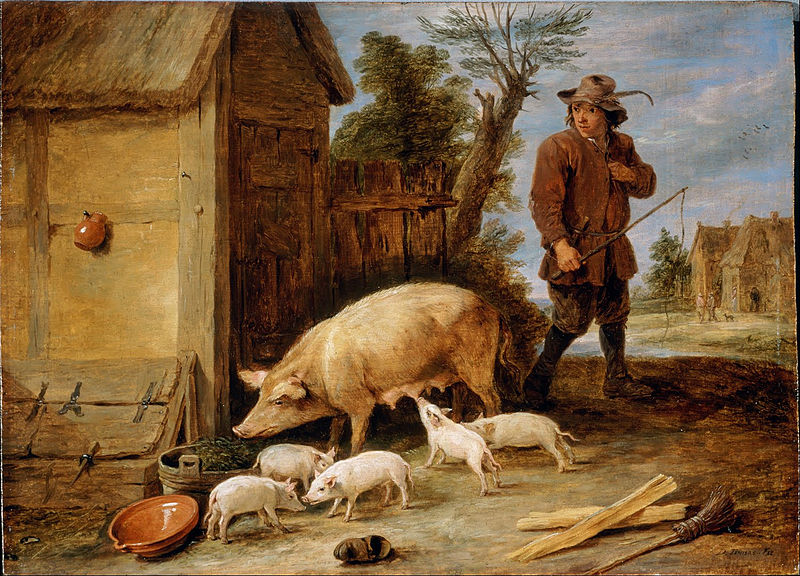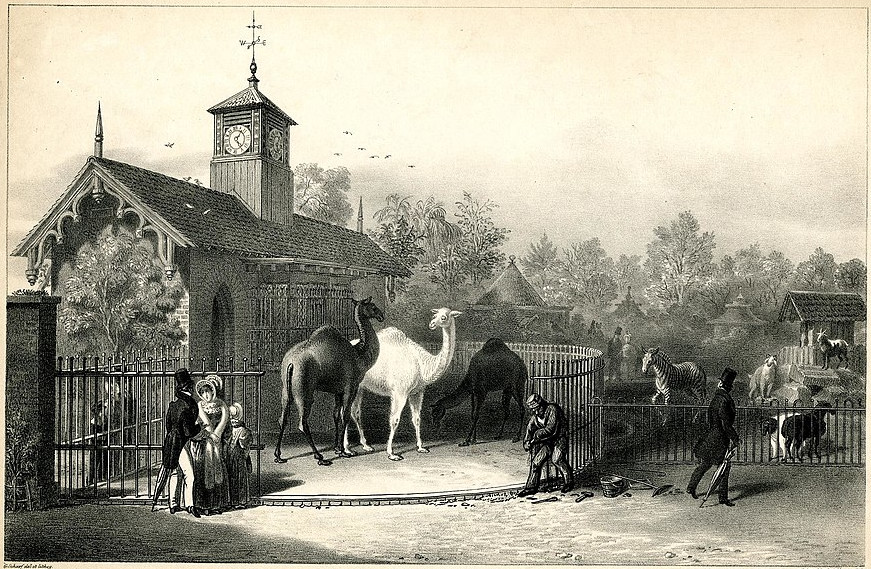
The gravestone of urban planner Ildefons Cerdà has a unique design: It commemorates the Eixample, the distinctive “extension” of Barcelona that Cerdà designed in the 19th century.

The gravestone of urban planner Ildefons Cerdà has a unique design: It commemorates the Eixample, the distinctive “extension” of Barcelona that Cerdà designed in the 19th century.
This passage, from E.B. White’s Charlotte’s Web, is often cited as a masterpiece of rhythm — the length of the phrases diminishes with the motion of the swing:
Mr. Zuckerman had the best swing in the county. It was a single long piece of heavy rope tied over the north doorway. At the bottom end of the rope was a fat knot to sit on. It was arranged so that you could swing without being pushed. You climbed a ladder into the hayloft. Then, holding the rope, you stood at the edge and looked down, and were scared and dizzy. Then you straddled the knot, so that it served as a seat. Then you got up all your nerve, took a deep breath, and jumped. For a second you seemed to be falling to the barn floor far below, but then suddenly the rope would begin to catch you, and you would sail through the barn door going a mile a minute, with the wind whistling in your eyes and ears and hair. Then you would zoom upward into the sky, and look up at the clouds, and the rope would twist and you would twist and turn with the rope. Then you would drop down, down, down out of the sky and come sailing back into the barn almost into the hayloft, then sail out again (not quite so far this time), then in again (not quite so high), then out again, then in again, then out, then in; and then you’d jump off and fall down let somebody else try it.
“All that I hope to say in books, all that I ever hope to say, is that I love the world,” White wrote. Though Eudora Welty called Charlotte’s Web “just about perfect,” White never revealed his reason for creating it. “I haven’t told why I wrote the book, but I haven’t told you why I sneeze, either,” he wrote to his editor. “A book is a sneeze.”
A problem from the Leningrad Mathematical Olympiad: A and B take turns removing matches from a pile. The pile starts with 500 matches, A goes first, and the player who takes the last match wins. The catch is that the quantity that each player withdraws on a given turn must be a power of 2. Does either player have a winning strategy?
From John Winter Jones’ Riddles, Charades, and Conundrums, 1822:
What is that which a coach always goes with, cannot go without, and yet is of no use to the coach?
Noise.
***
From Routledge’s Every Boy’s Annual, 1864:
Why is O the noisiest of the vowels?
Because all the rest are inaudible (in audible).
***
From Mark Bryant’s Riddles: Ancient & Modern, 1983:
What is big at the bottom, little at the top, and has ears?
A mountain (it has mountaineers!).

Elizabeth Nightingale died of shock at a violent stroke of lightning following the premature birth of her daughter in 1731. In his will, her son ordered the erection of this monument, which was created by Louis Francois Roubiliac and stands in Westminster Abbey. Elizabeth is supported by her husband, who tries in horror to ward off the stroke of death. Washington Irving called it “among the most renowned achievements of modern art.”
The Abbey’s website says, “The idea for this image may have come from a dream that Elizabeth’s brother in law (the Earl of Huntingdon) had experienced when a skeleton had appeared at the foot of his bed, which then crept up under the bedclothes between husband and wife. … It is said that one night a robber broke into the Church but was so horrified at seeing the figure of Death in the moonlight that he dropped his crowbar and fled in terror. The crowbar was displayed for many years beside the monument but it no longer remains.”

During an eclipse in 1919, Sir Arthur Eddington confirmed Albert Einstein’s prediction of the gravitational bending of light rays, upholding the general theory of relativity. That Christmas, Einstein wrote to his friend Heinrich Zangger in Zurich:
“With fame I become more and more stupid, which, of course, is a very common phenomenon. There is far too great a disproportion between what one is and what others think one is, or at least what they say they think one is. But one has to take it all with good humor.”
(From Helen Dukas and Banesh Hoffmann, eds., Albert Einstein, the Human Side: New Glimpses From His Archives, 1979.)

sybotism
n. the tending of swine
An interesting historical fact from these MIT notes: Christiaan Huygens proposed defining the meter conveniently as the length of a pendulum that produces a period of 2 seconds. A pendulum’s period is
so, using Huygens’ standard of T = 2s for 1 meter,
“So, if Huygens’s standard were used today, then g would be π2 by definition.”

For whatever this is worth: In Samuel Butler’s semi-autobiographical novel The Way of All Flesh, “one of the most eminent doctors in London” cures young Ernest Pontifex of nervous prostration by a course of “crossing,” or change. “Crossing is the great medical discovery of the age. Shake him out of himself by shaking something else into him”:
I have found the Zoological Gardens of service to many of my patients. I should prescribe for Mr Pontifex a course of the larger mammals. Don’t let him think he is taking them medicinally, but let him go to their house twice a week for a fortnight, and stay with the hippopotamus, the rhinoceros, and the elephants, till they begin to bore him. I find these beasts do my patients more good than any others. The monkeys are not a wide enough cross; they do not stimulate sufficiently. The larger carnivora are unsympathetic. The reptiles are worse than useless, and the marsupials are not much better. Birds again, except parrots, are not very beneficial; he may look at them now and again, but with the elephants and the pig tribe generally he should mix just now as freely as possible.
“Had the doctor been less eminent in his profession I should have doubted whether he was in earnest, but I knew him to be a man of business who would neither waste his own time nor that of his patients,” writes Butler’s narrator. “As soon as we were out of the house we took a cab to Regent’s Park, and spent a couple of hours in sauntering round the different houses. Perhaps it was on account of what the doctor had told me, but I certainly became aware of a feeling I had never experienced before. I mean that I was receiving an influx of new life, or deriving new ways of looking at life — which is the same thing — by the process. I found the doctor quite right in his estimate of the larger mammals as the ones which on the whole were most beneficial, and observed that Ernest, who had heard nothing of what the doctor had said to me, lingered instinctively in front of them. As for the elephants, especially the baby elephant, he seemed to be drinking in large draughts of their lives to the re-creation and regeneration of his own.
“We dined in the gardens, and I noticed with pleasure that Ernest’s appetite was already improved. Since this time, whenever I have been a little out of sorts myself I have at once gone up to Regent’s Park, and have invariably been benefited. I mention this here in the hope that some one or other of my readers may find the hint a useful one.”

Dutch Anabaptist Dirk Willems had made good his escape from prison in 1569 when a pursuing guard fell through the ice of a frozen pond and called for help.
Willems turned back to rescue him and was recaptured, tortured, and executed.